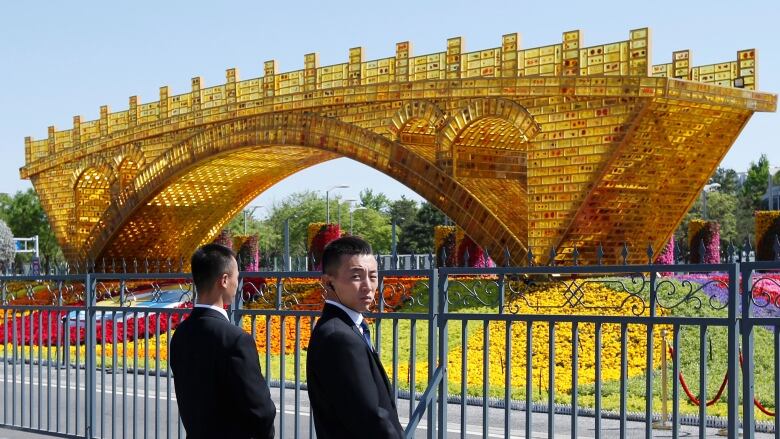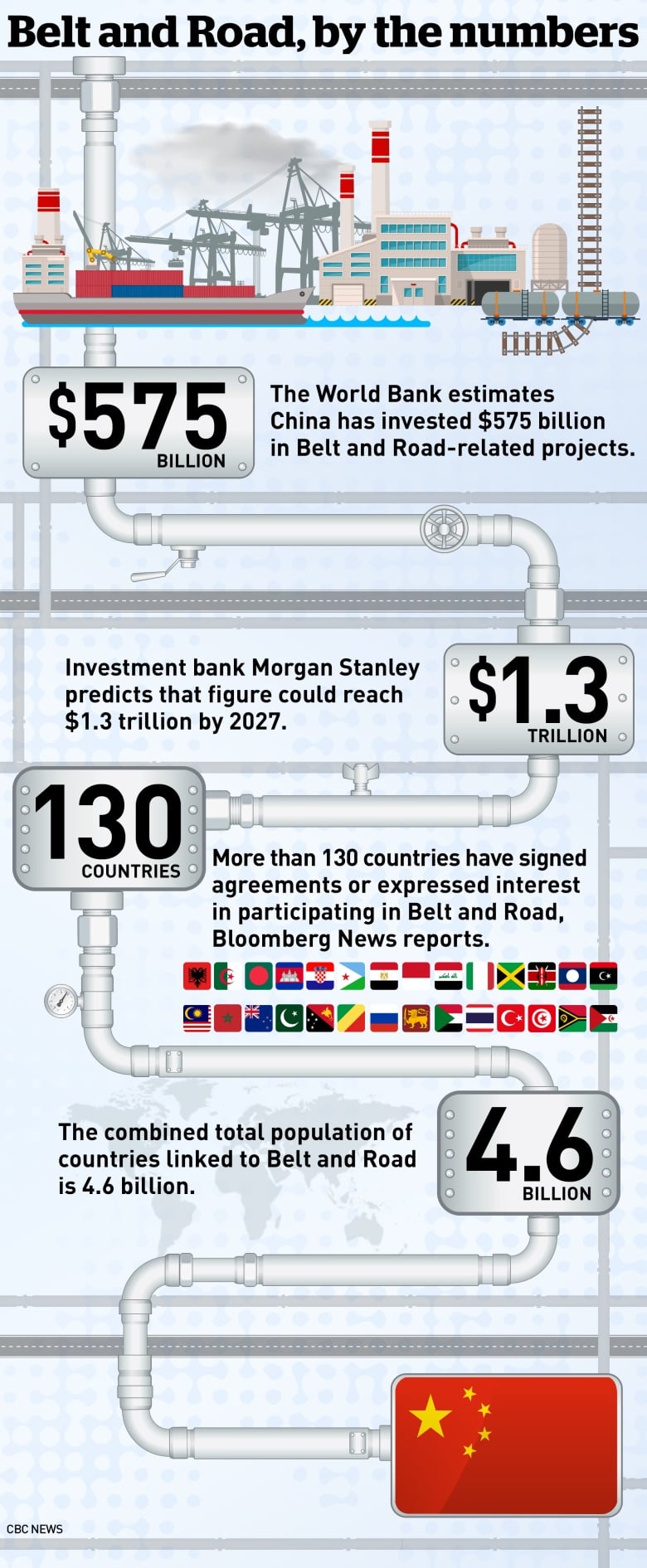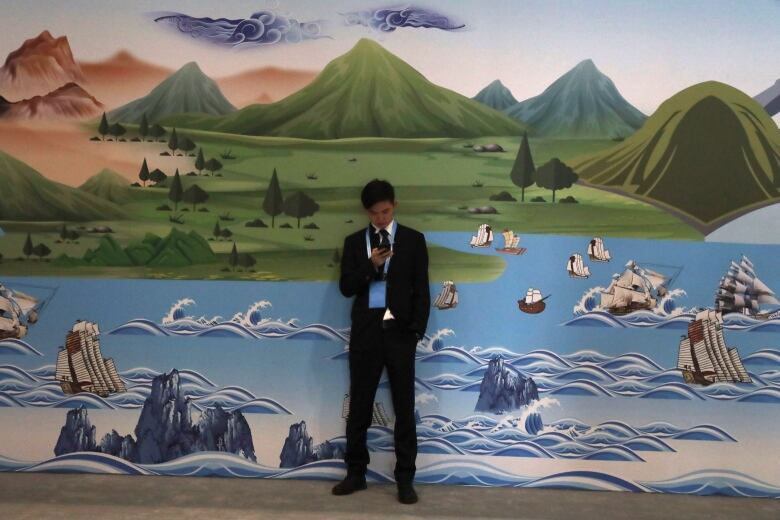China's Belt and Road Initiative: Where it goes and what it's supposed to accomplish
Economic powerhouse is investing billions of dollars in infrastructure projects around the world

This story is part of a CBC News series exploring China's expanding influence around the world and how Canada and other countries are contending with China's power.
Back in 2013, when the U.S. and many other countries were still recovering from the Great Recession, Chinese President Xi Jinping announced perhaps the most transparently ambitious foreign policy of the new century: the Belt and Road Initiative.
The name is a nod to the Silk Road, the ancient network of trade routes that connected China with the Roman Empire and many societies in between.
The modern version envisioned by Xi goes even further.
China is financing hundreds of billions of dollars' worth of infrastructure projects including ports, roads, bridges, railways, power plants, telecommunications networks and much more in partnering countries throughout Asia, Africa, Europeand beyond.
The purpose, China says,is to accelerate and enhance development and trade in order to create new markets and opportunities for China and its partners.
Where it goes

The "belt" in the name refers to the Silk Road Economic Belt, a network of roads, bridges and railways across Eurasia. The "road" refers to the Maritime Silk Road, a network of ports and seaways that surrounds Eurasia and connects with the Horn of Africa and as far as New Zealand.
The project also seeks to create six economic corridors that would facilitate the transportation of people, goods and data.

Determining which projects are actually part of the Belt and Road Initiative can be tricky.
Some infrastructure projects that were underway before Belt and Road was announced in 2013 have reportedly been rebranded as part of the initiative.
And many participating countries, such as thosein the Caribbean and South America, for example, are not located anywhere near any of Belt and Road's six economic corridors, or either the Silk Road Economic Belt or the Maritime Silk Road.
What it buys
Loans from China have enabled many countries to move ahead with infrastructure projects that may not have seemed possible before, including deep-sea ports, high-speed railways and massive hydroelectric dams.
The following map shows just some of the infrastructure projects either completed or underway across Asiaand parts of Europe and Africa.

Here are some more figures that show the size and scopeof China's investments.

The risks and rewards
The World Bank predicts that, if completed, Belt and Road projects could reduce travel times along the corridors 12 per cent, increase trade between 2.7 and 9.7 per cent, and lift 7.6 million people out of extreme poverty.
But the World Bank also says the policy carries potential risks, particularly for developing countries that may find themselves with unmanageable debt.

Some countries have already found themselves in that tough spot. Sri Lanka, for example,gave Chinaa 99-year lease forits port of Hambantota to help ease its debt burden.
Other countries, such as Malaysia and Myanmar, have cut their potential debt load by billions of dollars by either scrapping or scaling back projects.
Critics of the initiative, whichincludeU.S. Vice-President Mike Penceand Secretary of State Mike Pompeo,use such examples to argue the purpose of Belt and Road is less about trade and development, and more about China using so-called debt trap diplomacy to increase its sphere of influence.
A study from the Washington, D.C.-based Center for Global Development looked at the financial health of some countries receiving Belt and Road money. It identified eight recipients that are potentially headed for serious difficulty keeping up with their debt payments.

In some participating countries, Belt and Road projects have been linked to corruption, or faced opposition from citizens concerned about environmental damage.
At a time when much of the world is trying to reduce its carbon emissions, loans from China have financednew coal power plants in Asia and Africa.
One of the benefits of Belt and Road for China is thatit provides plenty of opportunities to put the country'sindustrial capacity to productive useall over the world, but some research suggestsit does so at the expense of local contractors and workers.
At its Belt and Road forum, held in Beijingin April, China sought to reassure its partners, and potential partners, that the program will have a renewed focus on oversight and guarding against corruption, debt sustainability and environmental protection going forward.













_(720p).jpg)


 OFFICIAL HD MUSIC VIDEO.jpg)
.jpg)



























































































